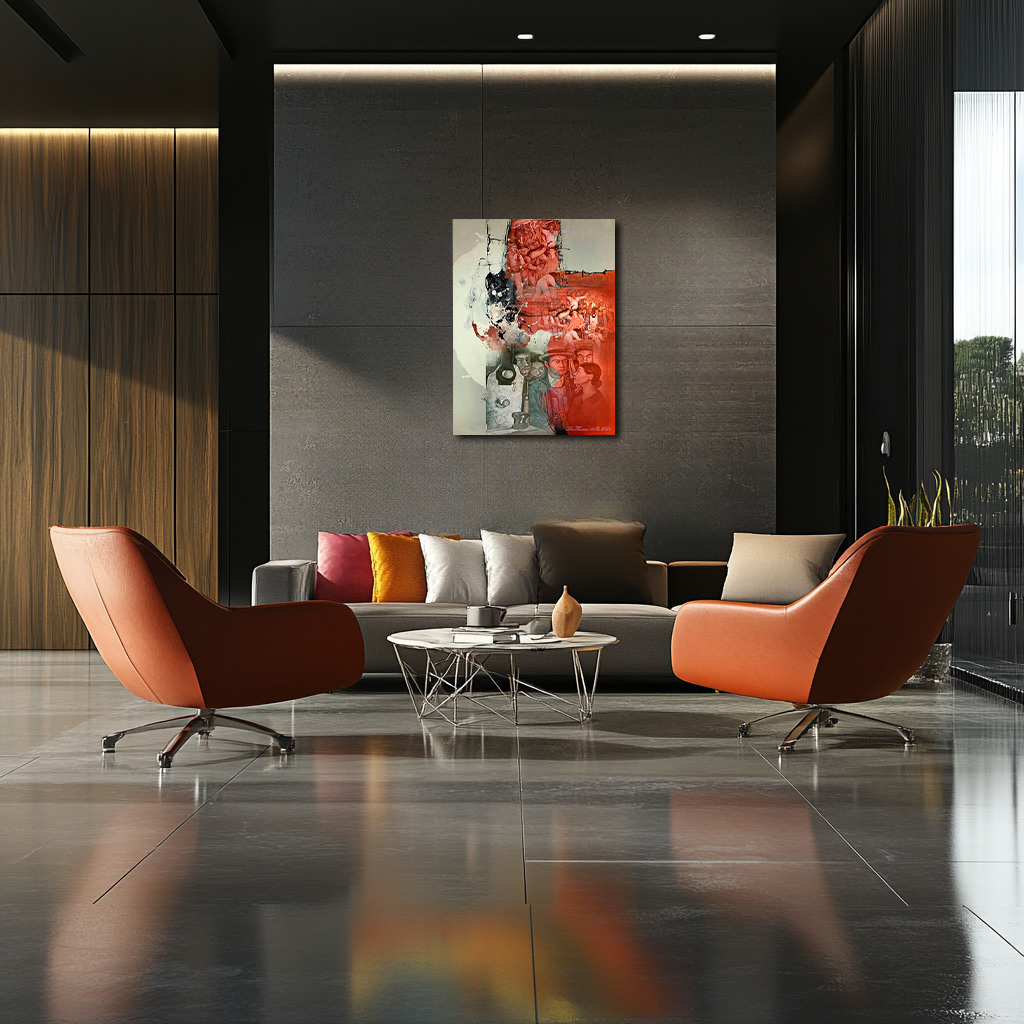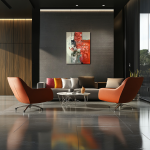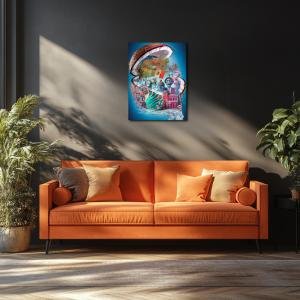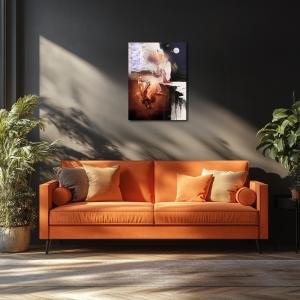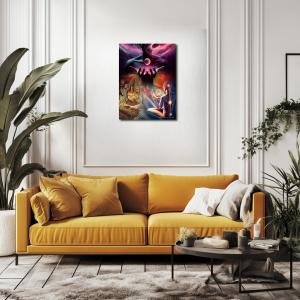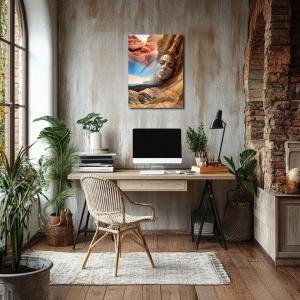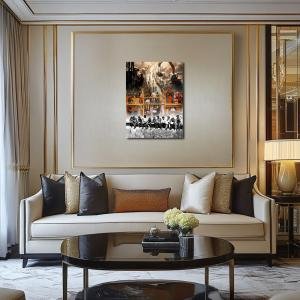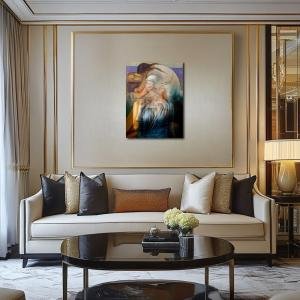The Arsenal: Memories in Red and Revolution
Memories in Red and Revolution is a conceptual reinterpretation of Diego Rivera’s The Arsenal , merging militant unity with the emotional abstraction of revolutionary memory. The central act of handing rifles is echoed through a collage of overlapping figures, dissolving into layers of red, black, and ivory. Through bleeding hues, stark lines, and fragmented motion, the piece reimagines the mural as a living, evolving memory—where revolution is not just depicted but felt, mourned, and questioned.
Please see Below for Details…
Hotline Order:
Mon - Fri: 07AM - 06PM
404-872-4663
This reinterpretation of Diego Rivera’s mural The Arsenal , housed in the walls of the Secretariat of Public Education in Mexico City, is titled Memories in Red and Revolution . In this collage-infused version, Rivera’s celebration of militant solidarity and labor strength is pulled into an atmospheric canvas of abstraction and visual layering. It is no longer a fresco on a wall—it becomes an internalized portrait of struggle, where memory and ideology bleed into the surface like ink in damp cloth. The past is no longer static; it is active, smoldering, unresolved.
At the heart of Rivera’s original mural lies a moment of passing—a woman handing out rifles to revolutionary workers. That figure, famously believed to be Tina Modotti, embodies the feminine agency in revolution: both nurturing and militant, supportive yet defiant. In this reworking, that moment is fragmented and re-assembled with visual echoes that spiral outward like reverberations from a single drop in still water. The surrounding figures—workers, intellectuals, soldiers—are blended into a spiral of motion, suspended in varying degrees of form and dissolution. Their gazes are fixed, not at the viewer, but at each other, locked in shared purpose.
The composition is intentionally torn. The left side opens in a wash of ivory, the right side glows in deep red. Between them: a splatter of black ink, a gash-like vertical stroke, and the rhythmic pulse of Rivera’s crowded narrative. This split is the conceptual center of the piece. It represents the duality of revolutionary history—clarity and confusion, creation and destruction, idealism and disillusionment. By smearing Rivera’s crisp realism into abstract fields, I wanted to show how revolutionary memory is constantly rewritten—not only by governments but by the hearts of those who live with its aftermath.
The use of red dominates the emotional temperature of this reinterpretation. Rivera’s original mural was steeped in terracotta and sienna—a palette tied to the soil, the skin of the people, the blood of struggle. Here, that red has intensified. It becomes a symbolic flood, bleeding into other colors, overtaking lines, suggesting not just violence, but continuity. Red is the color of resistance, yes—but also of narrative control. It consumes part of the canvas like ideology overtakes nuance, creating not clarity but fervor. It is passionate, potent, and sometimes dangerous.
The black and white areas—especially the stark lower left quadrant—recall Rivera’s graphite studies. They are unfinished, ghostlike, architectural. These tones suggest documentation, archives, forgotten drafts of revolution. These monochromes are not lifeless; they are breathing absences. They evoke the people who never made it into the mural, the invisible laborers who held the movement together without ever being remembered. In this space, Rivera’s figures are not framed—they are floating. Lost in ink and time, they haunt the red fields rather than inhabit them fully.
A subtle warmth is introduced through burnt orange and faded crimson hues, particularly in the skin tones and garments of the overlapping figures. These colors were used sparingly but intentionally. They speak to the exhaustion of continual resistance—the worn-out fabric of worker’s clothes, the fading of propaganda posters, the sunburnt resilience of those who keep marching. There is a softness here that counters the fire, reminding us that revolutions are made by tired people, not statues.
The abstract upper left features a burst of bone-white bleeding into black—a collision that might resemble smoke, or a torn banner, or the aftermath of a strike. That shape was meant to represent uncertainty—the moment when revolution loses clarity and becomes myth. Its asymmetry is essential. It throws off the compositional balance, forcing the viewer to feel the instability that marks political transformation.
When I created Memories in Red and Revolution , I imagined the wall not as canvas, but as skin—a surface that records heat, pressure, and the scars of repetition. Rivera gave us a blueprint for revolutionary art. I wanted to lift it from the wall and place it inside a storm. In this piece, the wall cracks. The paint runs. The figures blur. But they do not disappear. Instead, they float with intention, refusing to become mere symbols. They persist as restless spirits of resistance.
The aesthetic leans into contradiction. Precision collides with splatter. Ideological iconography is disrupted by chaos. The mural is no longer frozen in time—it breathes, bleeds, evolves. This is what revolution looks like when memory interferes—fractured, mythic, unresolved. It’s not a mural of completion. It’s a mural of continuation.
Add your review
Your email address will not be published. Required fields are marked *
Please login to write review!
Looks like there are no reviews yet.

